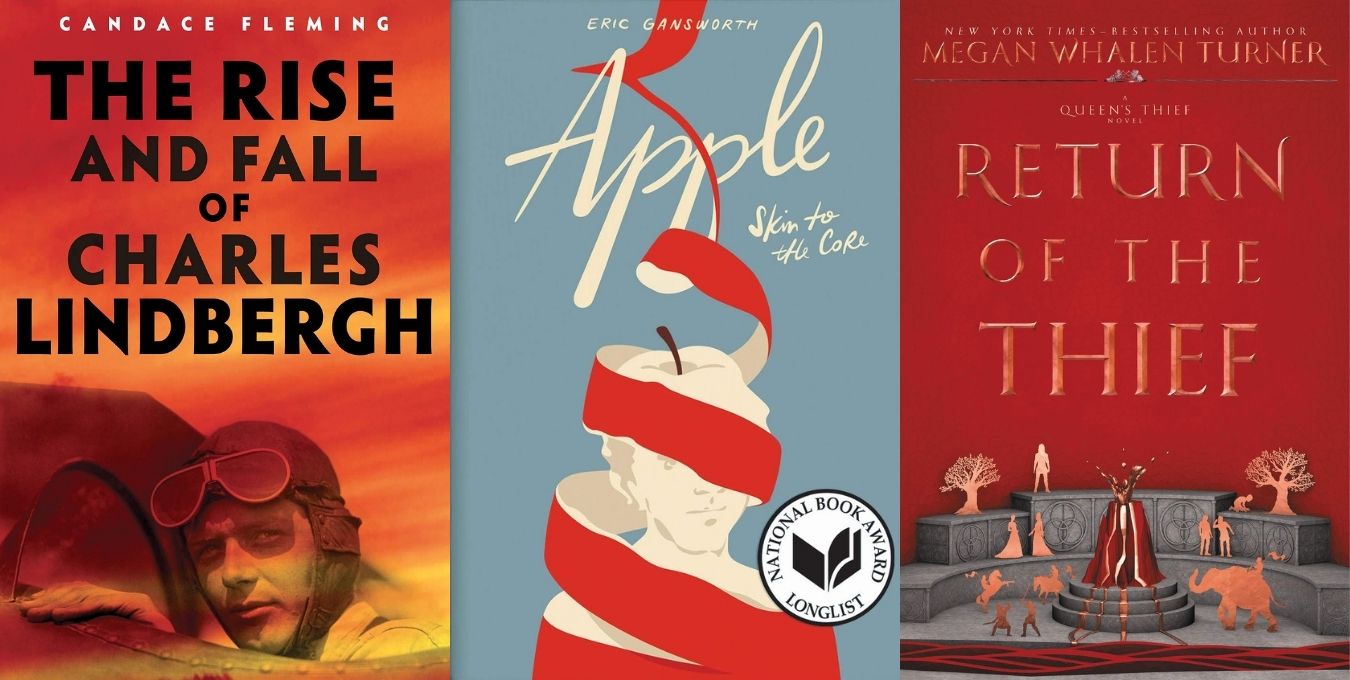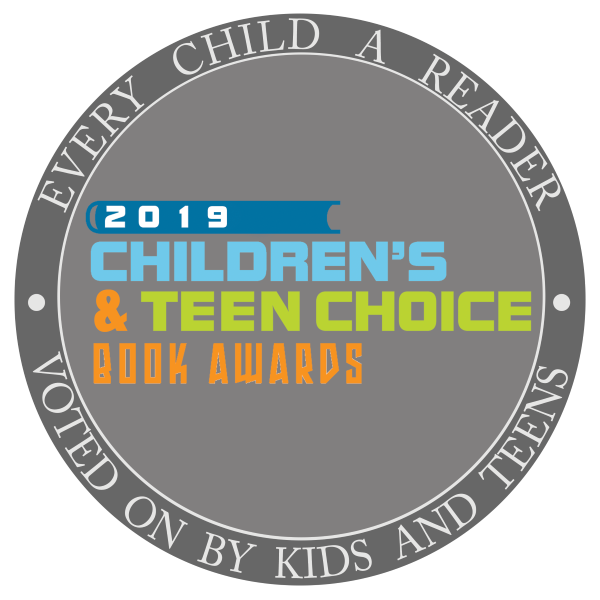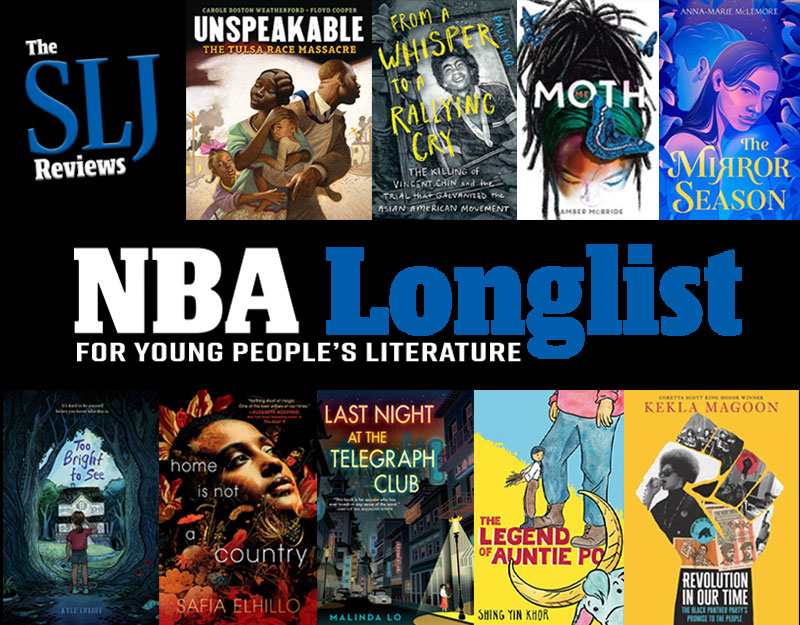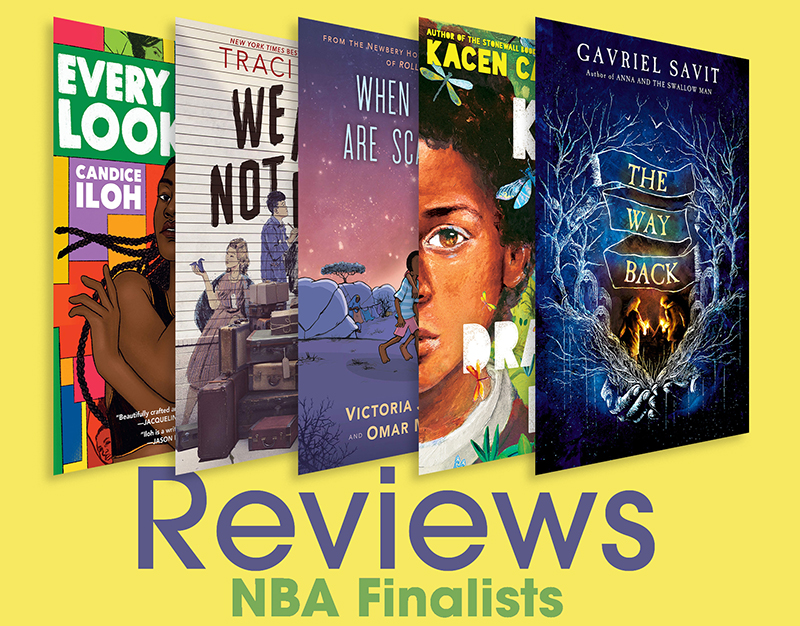Review of the Day: Trickster edited by Matt Dembicki
 Trickster: Native American Tales, A Graphic Collection
Trickster: Native American Tales, A Graphic Collection
Edited by Matt Dembicki
Fulcrum Books
$22.95
ISBN: 978-1-55591-724-1
Ages 9-12
On shelves now.
This year I helped a committee come up with the 100 best books for children. This list has been produced for a while and each year we make sure to include a folk and fairytale section. The problem? With each passing year publishers produce less and less folk and fairytales for kids. In the past this was a serious category, with a variety of different authors and illustrators all battling it out for folktale supremacy. Nowadays, you can read through a big publisher’s full catalog for the upcoming season and not find a single solitary folktale gracing their lists. It’s sad really. Maybe that’s part of the reason that Trickster, as edited by Matt Dembicki, appealed so strongly to me. This isn’t just a graphic novel and it isn’t just a pairing of smart writers and great artists. Dembicki has come up with a way of collecting a wide variety of Native American folktales into a single source, done in such a way that kids will find themselves enthralled. When was the last time a book of folktales enthralled one of your kids anyway? It’s remarkable. Not that it’s a perfect collection (there are a couple things I’d change) but generally speaking I hope Trickster acts as a sign of good things to come. I wouldn’t call it the ultimate solution to the current folktale crisis but I would call it a solution. And in this day and age of publishing, there’s something to be said for that.
 Twenty-one Native American storytellers are paired with twenty-one artists. Each storyteller tells a tale about a trickster type character. Coyote, raven, rabbit, raccoon, dog, wolf, beaver, and wildcat all have their day. The sheer range of storytellers is impressive, calling upon folks from Hawaii to the Eastern shore, from Alaska to Florida. Sometimes the stories are told traditionally. Sometimes they utilize a lot of modern terms (you don’t usually run across the term “crystal cathedral thinking” in a book of folktales these days). The final result is an eclectic collection, where each story plays off of the ones paired before and after it. Though oral in nature, editor Matt Dembicki finds a way to make these tales as fresh and spontaneous on the printed page as when they were told to generations of eager listeners.
Twenty-one Native American storytellers are paired with twenty-one artists. Each storyteller tells a tale about a trickster type character. Coyote, raven, rabbit, raccoon, dog, wolf, beaver, and wildcat all have their day. The sheer range of storytellers is impressive, calling upon folks from Hawaii to the Eastern shore, from Alaska to Florida. Sometimes the stories are told traditionally. Sometimes they utilize a lot of modern terms (you don’t usually run across the term “crystal cathedral thinking” in a book of folktales these days). The final result is an eclectic collection, where each story plays off of the ones paired before and after it. Though oral in nature, editor Matt Dembicki finds a way to make these tales as fresh and spontaneous on the printed page as when they were told to generations of eager listeners.
ADVERTISEMENT
ADVERTISEMENT
 I liked the sheer array of kinds of tricksters in this book. In some cases they were villains that had to be outsmarted. Other times they were unrepentant bad boys (never bad girls, alas) who always got their way. Sometimes they were wise and powerful, and other times very small and more sprite than single entity. I also enjoyed seeing similar stories repeat in different places. For example, in three different stories a trickster pretends to be dead in order to lure its prospective meal nice and close. These include “How Wildcat Caught a Turkey” as told by Joseph Stands With Many, “Azban and the Crayfish” by James and Joseph Bruchac, and “Ishjinki and Buzzard” by Jimm Goodtracks. Now these are stories from guys from the Cherokee, Abenaki, and Ioway/Otoe tribes, but the similarities are striking. There are people in this world who spend their entire lives tracking how tales move from one group of people to another. Trickster allows you a quick glimpse into that lifestyle.
I liked the sheer array of kinds of tricksters in this book. In some cases they were villains that had to be outsmarted. Other times they were unrepentant bad boys (never bad girls, alas) who always got their way. Sometimes they were wise and powerful, and other times very small and more sprite than single entity. I also enjoyed seeing similar stories repeat in different places. For example, in three different stories a trickster pretends to be dead in order to lure its prospective meal nice and close. These include “How Wildcat Caught a Turkey” as told by Joseph Stands With Many, “Azban and the Crayfish” by James and Joseph Bruchac, and “Ishjinki and Buzzard” by Jimm Goodtracks. Now these are stories from guys from the Cherokee, Abenaki, and Ioway/Otoe tribes, but the similarities are striking. There are people in this world who spend their entire lives tracking how tales move from one group of people to another. Trickster allows you a quick glimpse into that lifestyle.
I tried this book out with my children’s bookgroup and it was a big success. Really, the only problem was that a lot of them weren’t familiar with the very concept of tricksters and had a hard time figuring out, what they called, the “point” of certain stories. For example, in the tale “Rabbit and the Tug of War” a sneaky bunny manages to get two buffalo to tug on a single rope against one another, thinking they’re tugging against him. It’s a silly prank, but my kids were puzzled. “Why did he do that?” It’s tough being the first person to explain the concept of tricksters and trickery to ten-year-olds. You just sort of assume they know what you’re talking about.
 The kids also had distinct opinions on the art. I was a little surprised by it, honestly. First off, I’d never heard of a single one of the artists. None of them have really done graphic novels or comics in the young reader sphere, working instead in the realm of adult comics and Eisner Award winning books. None of the artists, as far as I could tell, were Native American either. Now in his notes From the Editor at the end of the book, Mr. Dembicki does say that the text of individual tales was always changed with the full approval of the storyteller. That said, I had to wonder what their opinions of their accompanying artists were. The animal stories wouldn’t have had to worry (mostly) but when you see American Indians in headdresses and the usual shtick, you have to parse whether or not someone might be offended. However, after listening to an interview with Dembicki, I learned that the storytellers were allowed to choose their artists, and that makes a huge difference, so my fears were sort of abated. On the kids’ part, they paid far more attention to the types of art being utilized. We all loved the art Jason Copland created of “Raven the Trickster” (looking like nothing so much as Arabel’s Raven in a slightly different form). They were disturbed by the art Paul Zdepski made for “Puapualenalena Wizard Dog of Waipi’o Valley” (like me). And they were all equally entranced by the work Pat Lewis did on “Rabbit’s Choctaw Tail Tale”. That Mr. Lewis doesn’t have a children’s book out yet is nothing short of bizarre. Clearly this is his medium.
The kids also had distinct opinions on the art. I was a little surprised by it, honestly. First off, I’d never heard of a single one of the artists. None of them have really done graphic novels or comics in the young reader sphere, working instead in the realm of adult comics and Eisner Award winning books. None of the artists, as far as I could tell, were Native American either. Now in his notes From the Editor at the end of the book, Mr. Dembicki does say that the text of individual tales was always changed with the full approval of the storyteller. That said, I had to wonder what their opinions of their accompanying artists were. The animal stories wouldn’t have had to worry (mostly) but when you see American Indians in headdresses and the usual shtick, you have to parse whether or not someone might be offended. However, after listening to an interview with Dembicki, I learned that the storytellers were allowed to choose their artists, and that makes a huge difference, so my fears were sort of abated. On the kids’ part, they paid far more attention to the types of art being utilized. We all loved the art Jason Copland created of “Raven the Trickster” (looking like nothing so much as Arabel’s Raven in a slightly different form). They were disturbed by the art Paul Zdepski made for “Puapualenalena Wizard Dog of Waipi’o Valley” (like me). And they were all equally entranced by the work Pat Lewis did on “Rabbit’s Choctaw Tail Tale”. That Mr. Lewis doesn’t have a children’s book out yet is nothing short of bizarre. Clearly this is his medium.
 For all this, the book is not without its flaws. For example, on a first reading it’s impossible to say which story is attributed to which tribe. After some time you will realize that within the biographies in the back of the book the tribe of each of the storytellers is listed alongside that person’s name. All well and good, but unfortunately this gives the book the initial impression that all tales are one and the same. I would have also have liked more information in Dembicki’s note at the end of the book about why certain artists were paired with certain stories. Ah well.
For all this, the book is not without its flaws. For example, on a first reading it’s impossible to say which story is attributed to which tribe. After some time you will realize that within the biographies in the back of the book the tribe of each of the storytellers is listed alongside that person’s name. All well and good, but unfortunately this gives the book the initial impression that all tales are one and the same. I would have also have liked more information in Dembicki’s note at the end of the book about why certain artists were paired with certain stories. Ah well.
Of course, the book wasn’t really written with a child audience in mind. Librarians in children’s rooms have purchased it for that purpose but you can tell that it was initially meant to be for a more adult crowd. Maybe that’s the solution to the folktale gap problem, then. If adults start reading folktales and begin collecting books like Trickster here, then perhaps we’ll see a resurgence of interest in the publishing industry. In the meantime, supplement your reading of this book with the child-friendly Trick of the Tale: A Collection of Trickster Tales by John and Caitlin Matthews and the more young adult The Coyote Road: Trickster Tales edited by Ellen Datlow and Terri Windling. I guarantee your trickster hunger will be well satiated if you happen to do so. You’ll probably keep returning to this book, though. There’s something new to find within it each time you pick it up.
On shelves now.
Source: Borrowed copy from library to review.
Blog Reviews:
- Good Comics for Kids
- Amy Reads
- The Comics Journal
- You Are What You Read
- Never Enough Nonfiction
- The Picnic Basket
- The Shelf Life
- Kids Lit
- Successful Teaching
- Chocolate Air
Professional Reviews:
- A starred review from Kirkus
- Starred reviews from School Library Journal and Booklist
- The Journal Sentinel
- Missoulian
- Rethinking Schools
Other Reviews:
Interviews:
- A lovely interview with Matt Dembicki exists at NPR and is well worth listening to. While you’re over there, listen to Joseph Stands With Many performing the story “How Wildcat Caught a Turkey” (which appears in this book).
- You can also listen to an interview he conducted on the podcast Back Porch Comics.
- Ditto the interview Dembicki did with Guys Lit Wire.
- Indian Country Today tried to get at the root of what Dembicki was trying to accomplish.
- Comics in the Classroom spoke with Dembicki alone.
- Graphic Novel Reporter interviews both Dembicki and storyteller Michael Thompson.
- Blue Corn Comics gives a Q&A interview with Dembicki and his publisher Christian Beranek.
- Dembicki also speaks with the Washington City Paper which, incidentally, has run interviews with many of the book’s creators including Paul Zdepski, Michael Auger, Chris Piers, Andrew Cohen, and Jacob Warrenfeltz.
Misc:
- Go back far enough and you’ll see a lot of great art for this book on the Trickster Anthology Blog.
- There’s an article on storyteller Elaine Grinnell and her participation in the volume at the Sequim Gazette.
- Take a peek inside the first story at Graphic Novel Reporter.
- Like the cover? Good thing. Two years ago everyone was quite certain that this would be the cover:
I see what they were trying to do, but I am relieved at the switch.
Filed under: Best Books of 2010, Reviews
About Betsy Bird
Betsy Bird is currently the Collection Development Manager of the Evanston Public Library system and a former Materials Specialist for New York Public Library. She has served on Newbery, written for Horn Book, and has done other lovely little things that she'd love to tell you about but that she's sure you'd find more interesting to hear of in person. Her opinions are her own and do not reflect those of EPL, SLJ, or any of the other acronyms you might be able to name. Follow her on Twitter: @fuseeight.
ADVERTISEMENT
ADVERTISEMENT
SLJ Blog Network
One Star Review, Guess Who? (#202)
Exclusive: Giant Magical Otters Invade New Hex Vet Graphic Novel | News
Parsing Religion in Public Schools
Take Five: LGBTQIA+ Middle Grade Novels
ADVERTISEMENT









I want this book! And I can’t help referring you to my long roundup of trickster fiction from earlier this year: http://bookaunt.blogspot.com/2010/04/trickster-fiction.html
Robert San Souci has a whole book of trickster tales about girls called Sister Tricksters if you are looking to balance the boys stories!
Terrific post. I, too, wished they’d been more clear… noting source of each story on its opening frame would have been great.
Thanks for scratching my trickster itch with this gorgeous review!